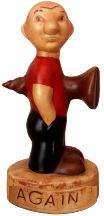 |
 The Virtual Corkscrew Museum's Weekly Newspaper |
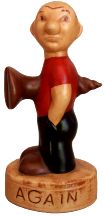 |
 |
 The Virtual Corkscrew Museum's Weekly Newspaper |
 |
|
Sunday June 24, 2007 |
Number 465 |
Outdoor Corkscrews
Tethers
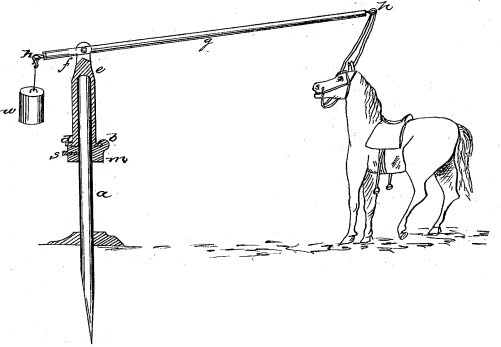
U. S. Patent No. 70,899 of November 12, 1867 for "Animal Tether" (D. W. Rawson)
teth·er(tr) n.
1. a. A rope, chain, or similar restraint for holding an animal in place, allowing a short radius in which it can move about. b. A similar ropelike restraint used as a safety measure, especially for young children and astronauts.
2. A rope, chain, or similar restraint for holding one, especially an animal, in place, allowing a short radius in which one can move about.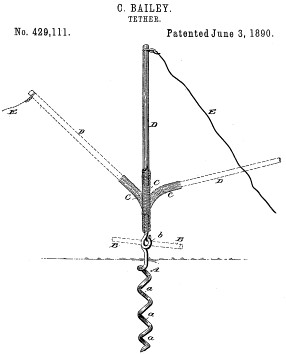
In his December 16, 1889 patent application for a "Tether", Clem Bailey of Kinston, North Carolina claimed "An animal-tether consisting of a screw portion, the rod provided with means for attachment to the animal, and a coiled spring connected at one end to the screw portion and the other to the rod..." U. S. Patent No. 429,111 was issued to him June 3, 1890.
Tent Stakes
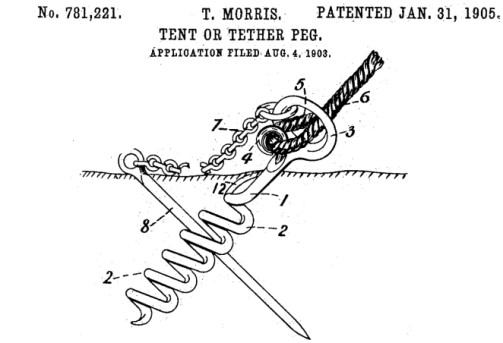
On January 31, 1905 Thomas Morris of Mornington, Dunedin, New Zealand was granted U. S. Patent Number 781,221 for a "Tent or Tether Peg". He wrote "This invention relates to pegs or stakes for making fast to the earth tent-ropes, animal tether-ropes, and the like, and in particular those pegs that have a head and neck with a corkscrew-body."
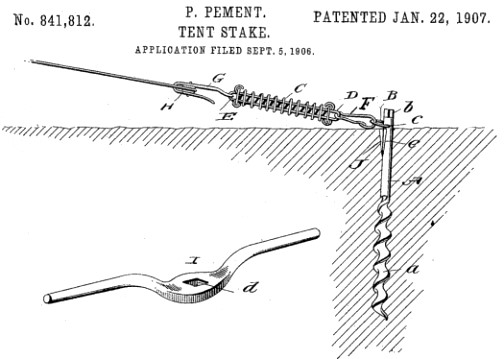
An interesting feature of Philemon Pement's 1907 patent for a "Tent Stake" is a removable handle for screwing the stake into the ground. He suggests that this handle could be made "of a bar of iron, wood, or other suitable material" (like corkscrew handles!). U. S. Patent No. 841,812 was issued January 22, 1907.
Fence Posts

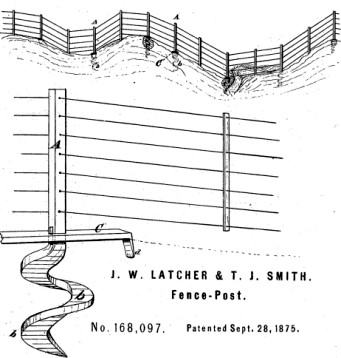
In Johnstown, New York, John W. Latcher and True W. Smith came up with their "Improvement in Fence-Posts" giving it added strength by "having the posts formed with a spiral or 'corkscrew' point having two or more coils to hold with a firm grip." They suggested using a wrench on the square top to screw the post into the ground. U. S. Patent No. 168,097 was issued September 28, 1875.
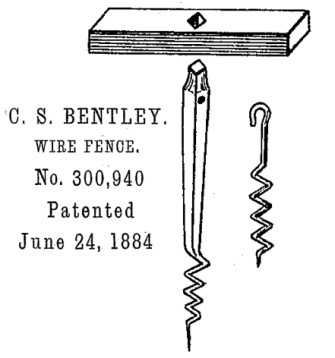
Bentley's patent with corkscrew shape end on fence post
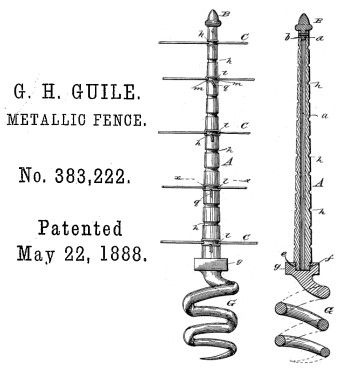
George Guile patented fence with "helical or corkscrew shaped points" on posts
More Ideas
Many other inventions can be found which use a "corkscrew" to secure something in the ground such as mailboxes, umbrella anchors, theft proof signs, climbing aids, and laundry drying hangers.
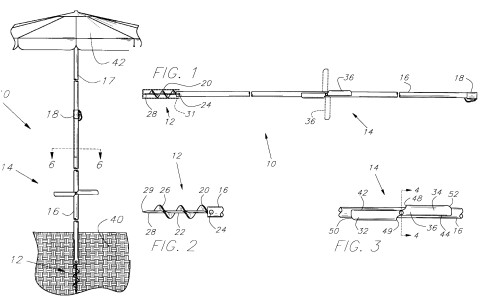
Bobby Gibson's 1996 Umbrella Anchor - U. S. Patent 6,199,569
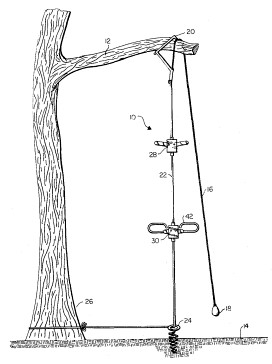
Hamilton Wisdom's 1972 Climbing Aid - U. S. Patent 3,658,151
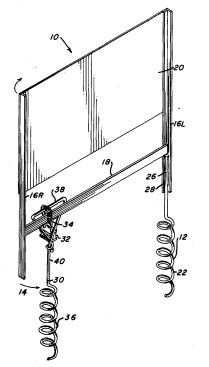
Marshall Hampton's 1978 Theft-Proof Sign - U. S. Patent 4,130,957
Other Uses
KitesRus.com offers their "Heavy duty corkscrew ground stake" for $9. "Screw this anchor into the ground and secure your single line kite so you can admire it while you do something else."
The same corkscrew is available on the Internet as a Tie-Out Stake for pets.
Soccer Edge offers a Bungee Cord Soccer Training Tool complete with corkscrew anchor. When you kick the ball, it comes right back to you!
Tether Weapon
A seller from England offered this tether with a Buy-It-Now price of £39.99. The description was "This is a very rare item from the movie the BORROWERS This is a large Weapon " corkscrew " approx 24" used by one of the borrowers. This is a fantastic item a must for any serious collector. Postage extra also included is a certificate of authenticity."
On their website is "Here's one for fans of over sized props. This is a two foot long corkscrew used by the miniature heroes of the movie 'The Borrowers' (1997). I kind of wonder if the special effects guy spent a lot of time making this, or just went to a pet store and got one of the corkscrew tethers for tying dog leashes to out in the middle of a yard."
|
©2007 Don Bull, Editor |